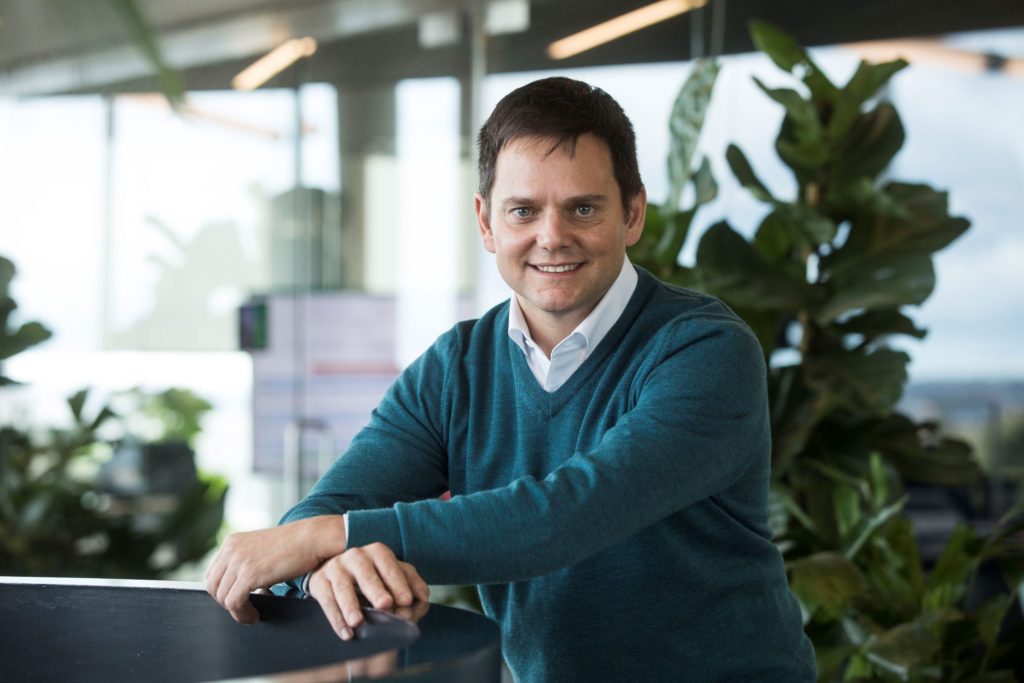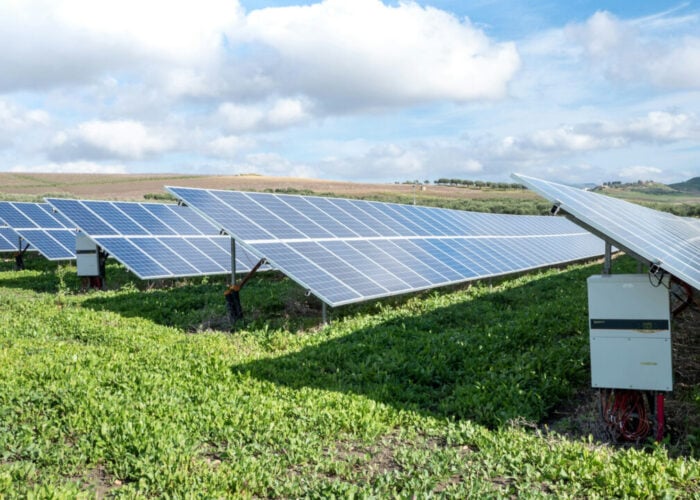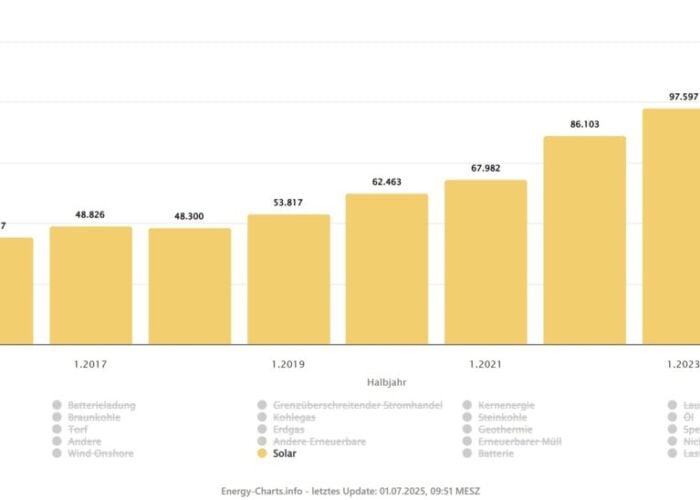
The European Commission’s REPowerEU plan has sought to set in motion a significant uptick in solar deployment on the continent, accelerating installations in both existing PV hotspots and new markets alike.
European developer Grenergy is among those companies taking the continent’s solar strategy as fuel for its own expansion plan, eyeing five new markets – Germany, Czech Republic, Austria, Hungary and Romania – with the option to target more jurisdictions in the future.
Unlock unlimited access for 12 whole months of distinctive global analysis
Photovoltaics International is now included.
- Regular insight and analysis of the industry’s biggest developments
- In-depth interviews with the industry’s leading figures
- Unlimited digital access to the PV Tech Power journal catalogue
- Unlimited digital access to the Photovoltaics International journal catalogue
- Access to more than 1,000 technical papers
- Discounts on Solar Media’s portfolio of events, in-person and virtual
In the past couple of years, Europe and the US have been Grenergy’s main target markets for growth, with Germany particularly highlighted by David Ruiz de Andrés, the company’s CEO.
“Germany is in an advanced state, it is likely that come September we [will] announce something,” he said, adding that Germany would be the company’s next top market with the intent of developing between 500MW and 1GW of solar capacity in the country.
That is what Grenergy has already achieved in Chile, one of its current major markets, and is expecting to do in Colombia and Peru in the next four to five years. “We are looking for markets with depth, that allow us to develop our business output which consists of creating the projects and developing them from scratch, Ruiz de Andrés said.
Germany also ticks those boxes and will have two different market segments, said Ruiz de Andrés, one comprising small-to-mid scale plants of up to 20MW in capacity, similar to the portfolio of distributed PV projects Grenergy has under development throughout Latin America. The other will comprise of utility-scale projects much larger in size, with the addition of agrivoltaics projects, especially Germany’s eastern regions.
Alongside market potential, Grenergy is also ensuring that projects it develops are either done so with energy storage codeveloped at the same time or designed in such a way that it can be retrofitted with ease. “We no longer conceive solar as a standalone, if we do a solar project it has to be co-located,” Ruiz de Andrés said, adding that its existing pipelines in Spain and Latin America are now being revisited with energy storage in mind.
That will require changes to planning and permitting, an area that the REPowerEU plan has sought to address in a change that Ruiz de Andrés warmly welcomed, but stressed the need for it to be approached universally, rather than just in specific markets.
“It is good that the problem is recognised but it is fundamental to be a joint action from the EU and Spain. In Spain’s case it is a problem.”
Those countries could be well served in reflecting on what Chile has done in terms of permitting, given the time difference of building a project from scratch is a question of years.
“Chile is a wonderful country for that. You start your park, you develop it and within a year and a half at the most, a large-scale park is fully permitted. It cannot be that in Spain it takes four or five years [and the] same in Italy,” Ruiz de Andrés said, lamenting the creation of planning bottlenecks throughout Europe.
One solution mooted by Ruiz de Andrés is the addition of more staff at the planning level to handle the surging number of permitting applications witnessed particularly in Spain, while a lack of interconnection with the rest of Europe – Spain and Portugal currently lacking the ability to expand its power exports to Europe – could also smooth grid constraints.
“For that to happen there needs to be a clear action from the governments at a continental scale to raise interconnections and especially persuade or force France to not torpedo it,” Ruiz de Andrés said.
A vision for Latin America
Amidst a broader push in Europe and the US, Grenergy will continue to target Latin America as an important market for its future growth. Earlier this year it inaugurated a 72MW solar PV plant in Colombia but, more importantly, the company has targeted 1GW of solar PV development for country.
Ruiz de Andrés said Grenergy became attracted to Colombia given the country’s interest in diversifying its power supply, yet relatively low presence or popularity with solar developers. Both Colombia and Perú are markets of interest for Grenergy for those reasons despite increased risks and the fact the majority of solar PV projects are backed through power purchase agreements rather than auctions.
Latin America has proven a difficult region for many solar developers to crack in the past and Ruiz de Andrés said any market in Latin America needs to be entered slowly, or “step by step” given the political turbulence comparative to other markets.
But the rewards are aplenty, with Chile in particular notable for its reputation as a “laboratory for renewables”, Ruiz de Andrés said.
Grenergy has connected over 500MW of solar PV in Chile, with the company adopting something of an experimental approach for some projects. One of those experiments was to launch a reverse auction for its 240MW Gran Teno solar park, which Ruiz de Andrés said was a novelty in the region and gave enough safety to build it.
“We saw the process of this kind as the only possible way to commercialise the energy of a big solar park,” he said, noting that a lack of a single buyer for that amount of power generation was difficult to come by. Mining companies in the region, one industry in need of such power, mostly look for round-the-clock power projects.
The success of the scheme has led Grenergy to consider replicating the approach in the future, with the results of the auction set to be announced shortly. But it has not deterred Grenergy away from its co-located solar-storage vision for the future.
“Every solar park needs to have the permitting solved with storage. When the moment of it being economically viable, it will not be the permitting that will bother you. It will have the advantage of having a quick deployment.”







